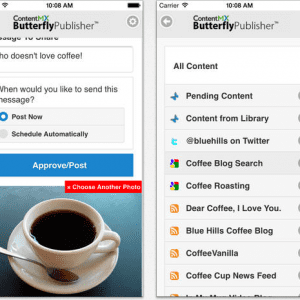Topics
IDC Research Points To Need For Deeper Partner Analysis
To improve overall efficiency and cost management, IT companies should focus on spotlighting their best-performing partners across their database and encourage them to purchase new solutions and updated software, a new IDC study reveals.
In a recent study of large IT companies for the white paper titled “The Importance of Customized Channel Marketing,“ IDC found that average channel revenue totaled $3.7 billion. With an average channel marketing staff of 53 and a partner base of nearly 22,000, companies bring in $12 million in revenue per staff member, but only $500 thousand per partner. Furthermore, active partners accumulated only 31% of companies’ channel department, leaving organizations with about 15,000 inactive partners — a majority of their database.
According to Gerry Murray, Research Manager of IDC’s CMO Advisory Service, it is ideal for vendors to identify on their best partners across the population and focus on delivering message to them to increase purchase likelihood. Murray provided further insight on the study and top tips for vendors in developing an efficient partner marketing strategy.
Channel Marketer Report: IDC’s study revealed that majority of vendors’ partnerships is inactive. What management tactics should they deploy to revitalize partnerships and boost revenue?
Gerry Murray: The study was focused on analyzing channel management practices at some of the world’s largest high-tech companies. Channels represent the majority of revenue for many BtoB companies, especially those in high-tech, and there is widespread diversity among partner communities. However, the channel management organizations are typically set up to optimize the performance of only the largest and most productive partners. While that’s logical, it inhibits the development of the rest of the community. Channel marketers must implement new models for managing partners because traditional approaches based on Business Development Managers and incentive programs don’t work very well in the face of massive scale and massive diversity. Customizable channel marketing programs is one example of how vendors can do a better job delivering more relevant support.
CMR: To optimize revenue potential and partner contacts, you advise vendors to implement a system to automate partner relationships, not just sales and marketing activities. What are the general benefits of this process?
GM: There’s little point in optimizing the sales and marketing activities for your partners until you understand the business drivers behind their success. For some partners the primary driver may be investment in trained/certified personnel, for others it might be sales and marketing, for others it might be pricing or volume based incentive programs. The important concept is not to put out a large jumble of offerings, but to know specifically what programs to offer to exactly which partners. Does a regional partner serving the health care market have the same challenges as another partner serving the real estate market? Maybe, but that information is crucial to any channel manager that is serious about moving partners up the performance curve.
That information is dynamic and the only way to efficiently collect and maintain it is by baking it into the relationship — or at least the platform supporting the relationship. By automating the whole partner relationship in a purpose built partner relationship management (PRM) system, vendors can not only provide better enablement for partner relations, they also can get better data on partners. The data can then be analyzed to create a granular segmentation model of the partner community, find segment leaders, and facilitate the research necessary to identify best practices. The PRM can be a platform to learn about what works for different kinds of partners, sharing that knowledge with partners in similar segments and enabling them to share with each other. In a world in which programs are easily replicated, it’s the relationship and the specific business support that create competitive advantage in attracting and retaining partners.
CMR: In the study, you compare the effectiveness of assigning partners to business development managers (BDMs) to customized marketing programs. What is the difference of the two and their impact on ROI?
GM: Business Development Managers (BDMs) and customized marketing programs were rated as nearly equal in their effectiveness at producing ROI. BDMs are very expensive resources and are typically assigned only to the largest partners. They are great for developing one very large or a small number of key accounts, but they are not very scalable. The average expected increase in partner performance when assigning a BDM is 35% to 38%. Customized channel marketing programs require some up front investment, but can be offered at scale for very little incremental cost. When marketed properly to the channel population, high growth partners self-qualify by their adoption of the programs and the initial investment can be amortized across their collective success. This greatly lowers the risk of focusing marketing support efforts on just the largest partners, and is another great tool for identifying the smaller partners that can be role models for the rest of the inactive and at risk partners.
Click here to download the entire report from IDC.














